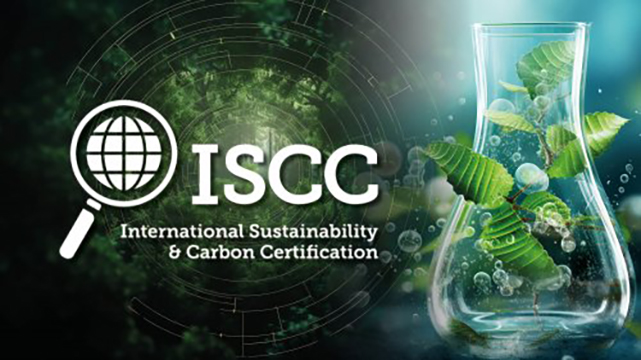More news
- Focus on industrial: Powering the energy industry during extreme heat
- Focus on powder coatings: The coatings industry’s transition to PFAS/PTFE-free solut...
- “We see sustainability as a purpose, as a reason for doing business” – P...
- Focus on industrial: High-performance coating protects tanks at biopolymer production plan...
- Focus on powder coatings: Novel high-speed crosslinking technology

Daniela Romano, Ph.D., Senior Regulatory Expert at Knoell, discusses the rules and regulations around using biocides in coatings within the EU and how to determine whether to classify a coated surface as a treated article or biocidal product
Biocides are used in coatings for a number of reasons, including protection, prevention and hygiene.
- Microbial protection: the use of biocides in coatings protects the coating itself from microbial degradation. Microorganisms like bacteria, fungi and algae can grow on the surface of coatings, causing discolouration, staining and deterioration. Biocides help to prevent the growth of these microorganisms, extending the lifespan and aesthetic appeal of the coated surfaces.
- Preservation of products: Biocides in coatings can protect the products or surfaces being coated. For example, biocides in paints and coatings can prevent the growth of mould and mildew on walls and ceilings, ensuring a healthy indoor or outdoor environment. In the marine industry, antifouling coatings with biocides are applied to ship hulls to prevent the accumulation of barnacles and other marine organisms. These organisms increase drag and reduce fuel efficiency.
- Maintaining hygiene: where hygiene is critical (e.g. hospitals, kitchens and food processing facilities) coatings with biocides can prevent the growth of harmful bacteria and other pathogens on surfaces. These coatings prevent the spread of diseases and enhance safety.
- Reducing maintenance costs and long-term performance: Coatings containing biocides often require less frequent maintenance because they are less susceptible to the growth of external organisms. As a result, the coated materials have a longer lifetime than untreated materials. Over time, this results in cost saving.
Biocide or treated article?
A surface coated with a paint can be classified as either a treated article or a biocidal product, depending on the purpose of the coating or paint and how it functions in relation to its biocidal activity. It is crucial to understand the difference between a biocidal product and a treated article:
- A biocidal product is a product with an active substance that is intended to destroy, deter, render harmless, prevent the action of, or otherwise exert a controlling effect on harmful or undesired organisms. The active substance in a biocidal product can be a so-called natural oil or extract, a chemical substance or a microorganism, virus or fungus. If the effect of a product is purely physical, then it is not a biocidal product.
- A treated article is any substance, mixture or article which has been treated with, or intentionally incorporates, one or more biocidal products.
Going back to the example of the coated surface, we could have two different configurations:
- The coated surface is a treated article if the paint (containing a biocidal product) is primarily intended to protect the coated surface (e.g., a wall, a door, a window, a table, etc.) from degradation, wear and tear, or damage caused by harmful organisms (e.g., mould, algae, or fungi).
In this case, the paint itself is not intended to perform an active biocidal function. Instead, it serves to protect the surface from the attack of harmful organisms which might degrade it.
READ MORE:
View from the US: Focus on sustainability has powder coatings poised for growth in the US
Treated articles are not subject to the same regulatory requirements as biocidal products, nevertheless they are regulated[1] by the same legislative framework.
- If the paint is formulated with a biocidal active substance, and it is applied to a surface with the aim to actively kill, control, deter, or render harmless harmful organisms on the coated surface, then the latter is considered a biocidal product and it is subject to the Biocidal Product Regulation[2] (BPR) requirements. This is because the coating on the surface is not meant to protect the surface, but to impair the growth of microorganisms on the surface. The latter is a primary biocidal function.
It is important for manufacturers and users of such products to be aware of and comply with applicable regulatory requirements, to ensure safe and legal use of treated articles or of biocidal products.

Figure 1. The active substance (a.s.) Tebuconazole is an ingredient of the paint for the preservation of the wood. The primary function of the paint is to control wood-destroying or wood-disfiguring fungi, so the paint is a biocidal product (b.p.). The table painted with the b.p. is the object of the treatment, therefore it is protected from harmful organisms. The table does not exert a primary biocidal function, ergo it is a treated article.

Figure 2. The coating makes the surface bacteriostatic. As a result the table desk is then a biocidal product
Decision tree
Understanding whether a surface coated with a biocidal paint is a biocidal product or a treated article is crucial, because it determines the reference regulatory framework.
Here is a decision tree helping answering this question:
First: Understanding whether the article has been treated by or intentionally incorporates a biocidal product.
- No: the article is outside the scope of the BPR.
- Yes: the article could be either a treated article or a biocidal product.
Second: determine whereas the treatment/incorporation confers a biocidal function to the article or not.
- No: the treatment/incorporation protects the properties or the function of an article or extends its durability. The product is a treated article.
- Yes: Is the biocidal function the primary function?
- No: the item is a treated article;
- Yes: the article is a biocidal product.

Figure 3. Flow chart[3] with the decision tree to determine whether the item is a treated article or a biocidal product
Placing on the market
Placing either a biocidal product or a treated article on the market require a very different procedure:
- All biocidal products require an authorisation before they can be placed on the market and the active substances contained in that biocidal product must be previously approved.
- The approval procedure of the active substances requires an extensive data set on the molecule/micro-organism including: physical-chemical properties, general efficacy, toxicological and eco-toxicological properties. The risks for humans, animals and environment need to be assessed.
The procedure is costly both in time and financially (ranging between €2-5M), requiring several years for the data collection and evaluation from the European competent authorities.
Once the European Commission publishes the approval of the active substance, the biocidal products containing it need to be authorised. This authorisation procedure is faster and less expensive compared to the approval of the active substance. Nevertheless, the procedure is still challenging. A complete data set and risk assessment are required for the product, similar to the active substance dossier. This procedure lasts at least four years and it costs more than €300,000, depending on the complexity of the dossier.
For treated articles, Article 58 of the BPR regulates the use and placing on the market of treated articles.
As of March 1, 2017, it is no longer possible to place, on the EU market, articles treated with a biocidal product (or intentionally incorporating a biocidal product) containing an active substance which is not already approved, listed in Annex I, or under assessment.
Companies must also be ready to provide the consumers with information about the biocidal treatment of the article they are selling. If a consumer requests information about a treated article, the supplier must provide it free of charge within 45 days.
Manufacturers and importers of treated articles need to ensure that products are labelled according to both the regulation on Classification, Labelling and Packaging (CLP) and the additional requirements defined by the BPR. The latter require manufacturers and importers of treated articles to label them when:
- The treated article claims biocidal properties;
- It is required in the conditions of the approval of the active substance contained in the biocidal product used to treat the article.
The labels need to be easily understandable and visible for consumers.
Conclusions
Coatings containing biocides can improve performance and durability of the articles treated with them. These coatings could be polymeric materials, creating a film on the surfaces they are meant to protect.
Prior to introducing a coated item into the market, it is imperative to ascertain its classification as either a treated article or a biocidal product. In either scenario, cautious usage in accordance with provided instructions is essential, taking into account the well-being of individuals in proximity and the impact on the environment.
Ongoing research in this field is dedicated to continually improving the safety and performance of coating materials.
For more information, visit www.knoell.com
References
[1] Regulation (EU)528/2012 article 58
[2] Regulation (EU)528/2012 articles 19 and 20
[3] CA-Sep13-Doc.5.1.e(Rev1) https://circabc.europa.eu/ui/group/e947a950-8032-4df9-a3f0-f61eefd3d81b/library/2ecf9727-0b6e-4980-9d5f-12d8324153c9/details







